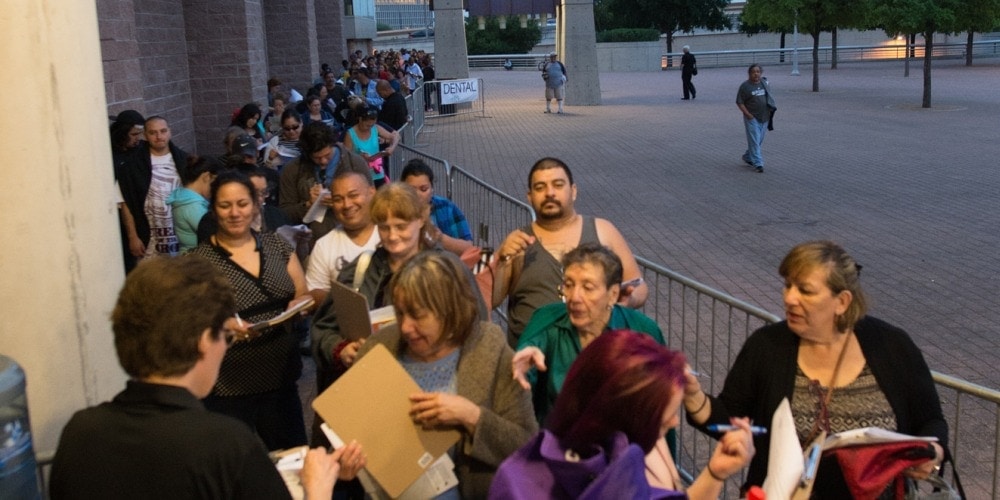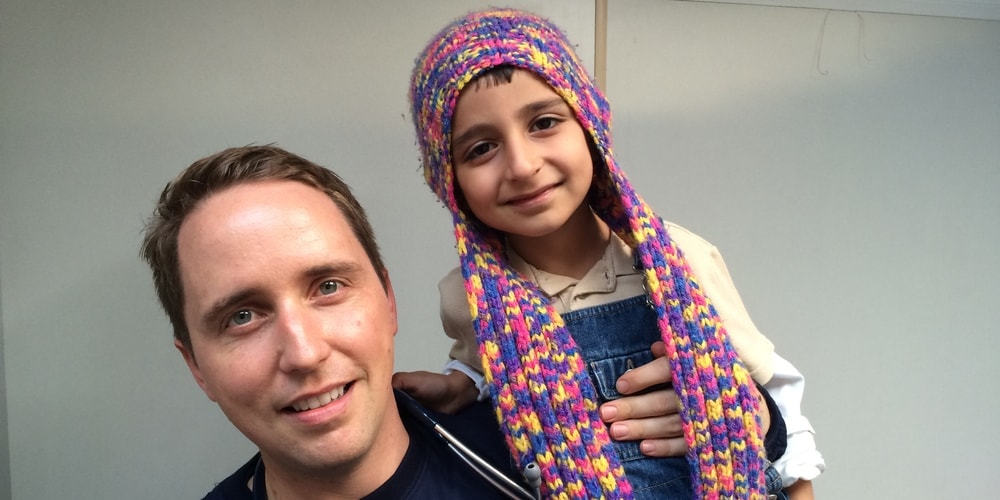
As war and rumors of war rattled the world in 2015, the Seventh-day Adventist Church sought to act as the hands of Jesus in sharing medical treatment with the sick, food and shelter with the homeless, and heavenly peace with the distraught.
Those efforts were most clearly seen in Comprehensive Health Ministry, a church initiative to bring physical and spiritual healing to people that tops our list of the biggest stories that shaped the Adventist Church over the past year. Leading the way were a series of church-organized mega-clinics that have provided free medical care to scores of people in Zimbabwe, the United States, Papua New Guinea, and elsewhere.
Incidentally, this outreach also showcases Total Member Involvement — a program introduced by Adventist Church president Ted N.C. Wilson in July that calls for every one of the church’s 18.5 million members to actively participate in evangelism and witnessing.
Here are the four biggest stories in the Adventist Church in 2015.

As Jesus’ fame spread across first-century Judea, all those who were sick flocked to Him to be healed (Matthew 4:24).
A similar scene unfolded in multiple cities this year as tens of thousands of people sought and received root canals, physical therapy, surgery, and other medical treatment at no cost at Seventh-day Adventist-organized mega-clinics.
The biggest mega-clinic took place in Zimbabwe in May when a team of volunteer doctors, nurses, and other health professionals treated more than 34,100 people over two weeks in a shopping center near the capital, Harare. Increasingly large crowds of people descended on the shopping center for assistance as word spread from neighbor to neighbor and through the media about the church-organized event.
A month earlier, the Your Best Pathway to Health organization working in conjunction with the Adventist Church provided $20 million in free health-care services to nearly 6,200 people over three days at the Alamodome stadium in San Antonio, Texas.
In August, the same organizers assisted 3,111 patients at a two-day event in Spokane, Washington.
Your Best Pathway to Health is now preparing to care for 10,000 people over three days at a mega-clinic in Los Angeles in April 2016.
Elsewhere, thousands of people got free Adventist healthcare in Papua New Guinea and, in a particularly heart-touching story, a free clinic organized by Linda Vista Adventist University in Mexico won the hearts of a volatile community that had once appropriated university property.
Volunteers at the free clinics have made Jesus real to many people.
“They indeed reflect the grace-filled, empathetic and life-changing example of the great Master Physician, Jesus Christ,” Dr. Peter Landless, director of the Adventist world church’s health ministries department, told the Adventist Review, after the Spokane event. “Through the lens of unselfish service, recipients of this care may more clearly discern the love and compassion of the loving Savior, who is the path that ultimately leads us to wholeness.”

The General Conference Session, a quinquennial church business meeting that met for two weeks of July in San Antonio, Texas, set the tone and direction for the Seventh-day Adventist Church for the next five years.
More than 80 percent of the some 2,400 delegates voted in favor of re-electing Ted N.C. Wilson as president of the General Conference.
Wilson immediately announced three main goals for the next five years: a greater emphasis on Christ and His righteousness, faithfulness, and total member involvement in evangelism and witnessing.
“God intends for His people to stand faithfully, but we have got to do it together,” he said in a speech after his re-election.
Several days later, General Conference Session delegates turned down a motion that would have allowed each world division of the Adventist Church to decide for itself whether to ordain women to the gospel ministry in its territory.
The vote — by a margin of 1,381-977, with five abstentions — ended a five-year process characterized by vigorous and sometimes acrimonious debate. Church leaders quickly called for members to put their full focus on the church’s mission of preparing people for Jesus’ Second Coming.
“Now is the time to unify under the bloodstained banner of Jesus Christ and His power, not our power,” Wilson said after the ballots were counted on tables at the front of the Alamodome stadium. “Now is the time to unify in our mission as Christ’s church.”

Church members may have wondered how a denomination with just 18.5 million members would be able to enlist enough missionaries to share its message about Jesus’ soon coming to a world of 7 billion people.
The U.S. presidential ambitions of Ben Carson showed that the task might not be left up to church workers alone.
Carson, a retired neurosurgeon and Adventist member, put the Adventist Church under an unprecedented spotlight as television, newspapers, and the Internet reported about Adventists and their beliefs in the seventh-day Sabbath, hell, the state of the dead, and the imminent return of Jesus. The respected Pew Research Center released three reports about Adventists, including one that found the church was the most diverse in the United States.
Public interest grew so high that the church opened a new website called “Who Are Adventists.”
A North American Division statement about Carson’s presidential bid became the most-read story of 2015 on the Adventist Review’s website.

An unprecedented rush of migrants to Europe has also brought new insights into how the Adventist Church may be able to reach the world without necessarily relying on traditional methods such as missionaries.
“We’ve spent years trying to reach people in the Middle East,” an astonished Adventist leader told a recent church meeting in Europe. “Now they are coming to us.”
Adventist believers across Europe are feeding, sheltering, educating, and otherwise helping migrants establish better lives. Many of the migrants are from war-torn Syria, Iraq, and Afghanistan.
“I personally see this challenge as an opportunity to help our guests and us become better people,” Rafaat Kamal, president of the Adventist Church’s Trans-European Division, told the Adventist Review in September. “This is the beauty of compassionate generosity and service to broken human beings.”
The Adventist Development and Relief Agency is working overtime to assist both people in refugee camps in the Middle East and those who have reached Europe’s shores.
An ADRA campaign to collect aid for migrants took the country of Slovenia by storm this fall. Volunteers had just a few hours to collect 2.5 tons of aid for an airplane shipment, but they got 12.5 tons.
ADRA also teamed up with the United Nations to open an asylum information center that provides reliable information about refugee rights and other resources in Serbia’s capital, Belgrade, an entry-point city for many migrants seeking to resettle in other parts of Europe.
Daniel R. Jackson, president of the Adventist Church in North America, wrote a well-received news commentary in The Huffington Post that urged compassion toward migrants.
A 30-year-old Adventist physician from South Africa spent weeks providing medical care at the epicenter of Europe’s migrant crisis, a stretch of beach on the Greek island of Lesbos where hundreds of wet, frightened children and adults wash up daily.
“We’re on the beach all day welcoming, comforting, dressing, warming, treating, and caring for the incoming groups,” said the doctor, Michael-John Von Hörsten, in an interview. “Every evening when it gets cold our clinic bus is filled with dozens of wet terrified children, and we warm, dress and feed them. It’s such a privilege.”
In such an acute situation, it is impossible to convey the finer truths of the gospel, he said.
“We’re here to care for them and point them to Jesus by doing so,” he said. “That’s all.”
Read also 7 Biggest Stories That Shaped the Adventist Church in 2014
Related stories to the 2015 list:
1. Comprehensive Health Ministry
2. General Conference Session
3. Ben Carson
4. Migrants